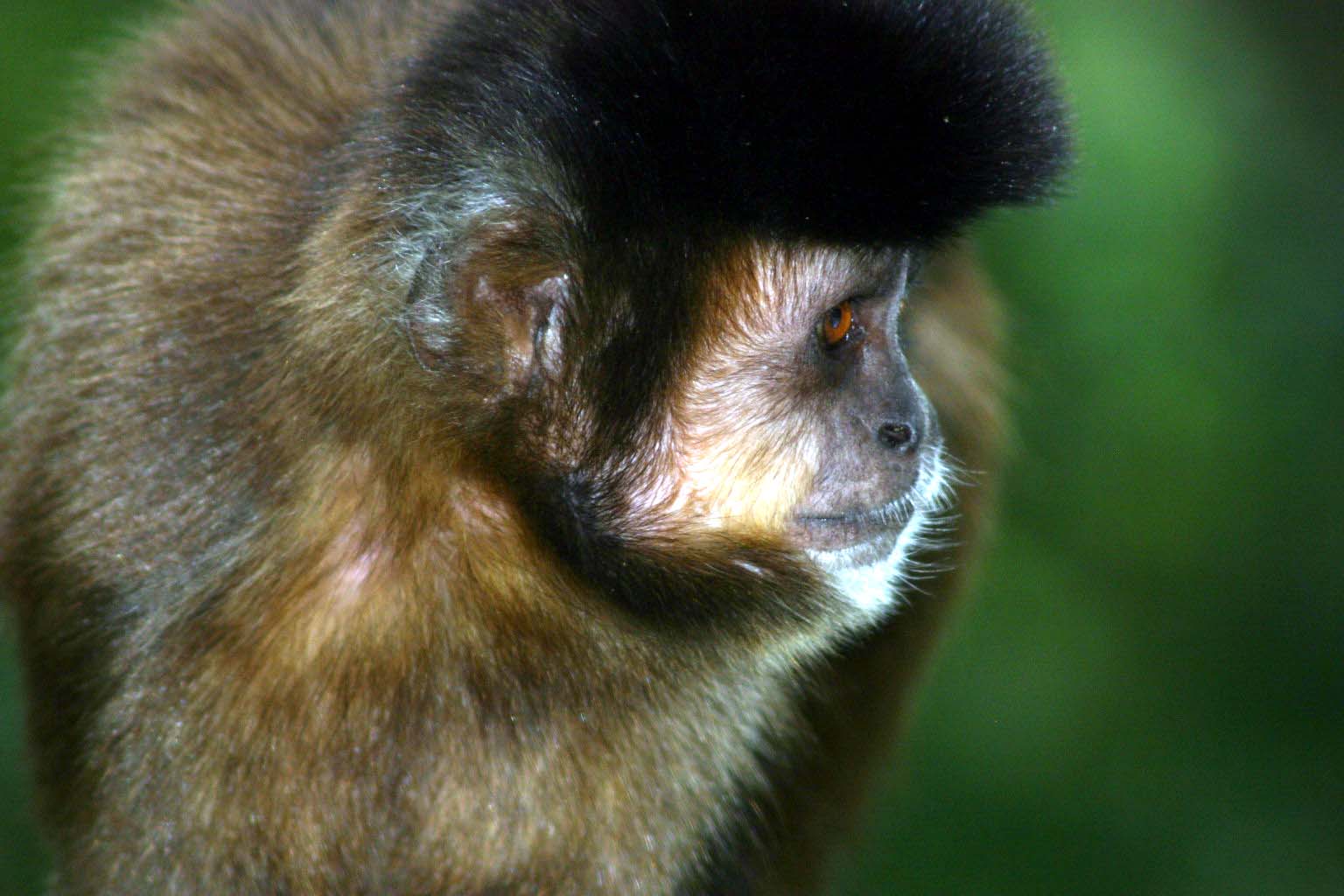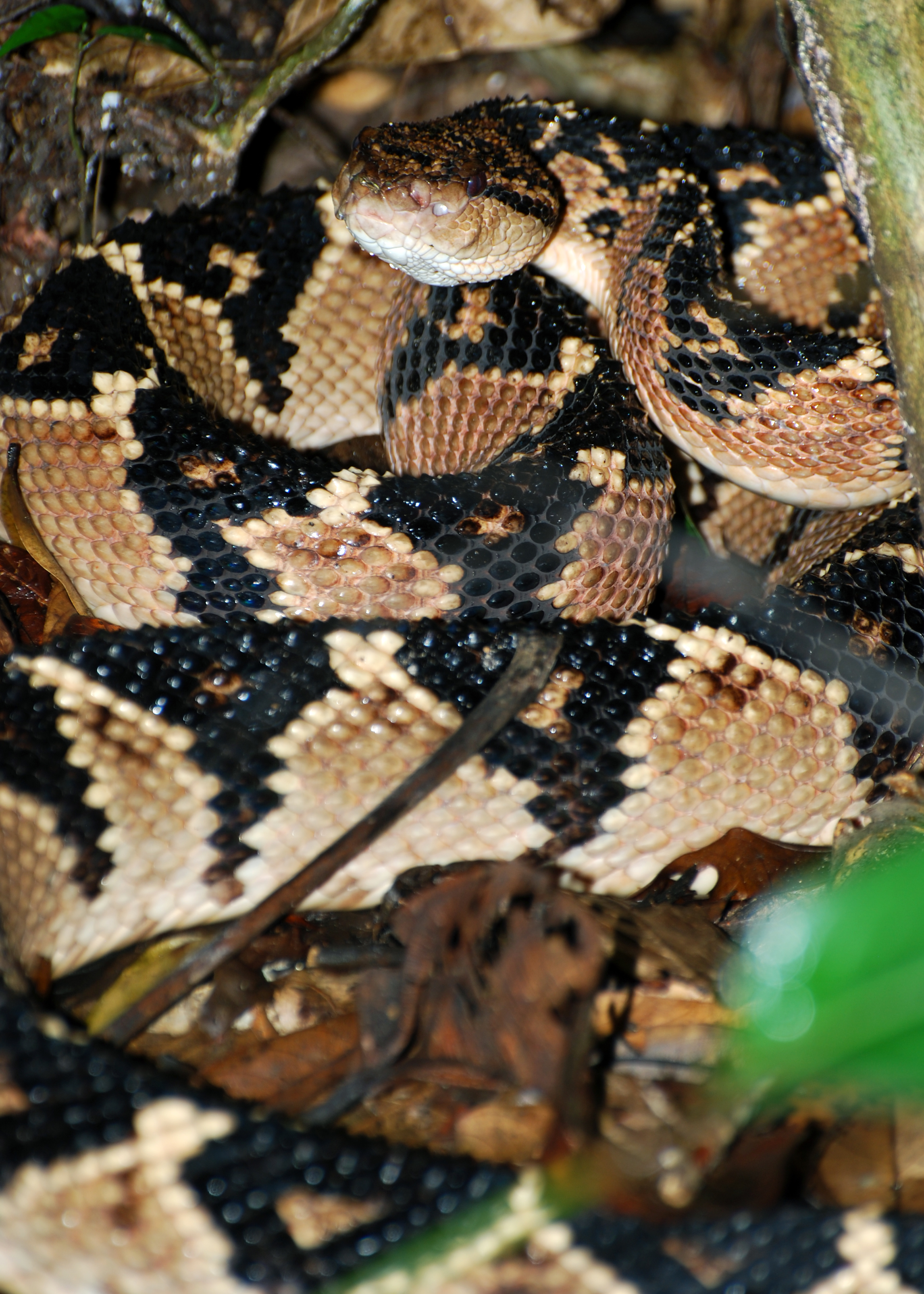|
Caratinga Biological Station
Feliciano Miguel Abdala Private Natural Heritage Reserve ( pt, Reserva Particular do Patrimônio Natural Feliciano Miguel Abdala), formerly the Fazenda Montes Claros and then the Caratinga Biological Station, is a privately owned sustainable-use protected area in the state of Minas Gerais, Brazil. It contains an example of Atlantic Forest biome. The reserve is home to rare buffy-headed marmosets and to one of the last wild populations of northern muriqui woolly spider monkeys. History Feliciano Miguel Abdalla, the son of a Lebanese immigrant, obtained the Fazenda Montes Claros estate in the state of Minas Gerais in 1944 on condition that he preserve the forest on the property. At this time the settlers in Minas Gerais were clearing the land for agriculture, and conservation was an alien concept. For many years he had to struggle against hunters and people looking to harvest timber and hearts of palm, sometimes at risk to his life. Towards the end of the 1960s Abdalla began ... [...More Info...] [...Related Items...] OR: [Wikipedia] [Google] [Baidu] |
Caratinga
Caratinga is a municipality in eastern Minas Gerais state, Brazil. The population in 2020 was 92,603 inhabitants and the total area of the municipality was 1,251 km2. The elevation is 578 meters above sea level, with maximum elevation of 1,516 m in the Serra do Rio Preto and 330 m at the mouth of the Córrego Boachá. Location The municipality is located at 19° 37’ 30’’ latitude south and at 42° 09’ 00’’ longitude west. It is part of Region VIII, denominated Rio Doce, and part of the microregion of Mata de Caratinga, in the eastern part of Minas Gerais. It lies on the important Rio-Bahia interstate highway (BR 116) and is connected to the state capital of Belo Horizonte by BR–381 to the city of João Monlevade. After João Monlevade there is a federal highway, BR 262, which leads into the capital. The state capital lies at a distance of 320 km. The nearest airport is in Ubaporanga 15 km from downtown, tarmacked runway 1200 m long and 20 m wid ... [...More Info...] [...Related Items...] OR: [Wikipedia] [Google] [Baidu] |
Tufted Capuchin
The tufted capuchin (''Sapajus apella''), also known as brown capuchin, black-capped capuchin, or pin monkey is a New World primate from South America and the Caribbean islands of Trinidad and Margarita. As traditionally defined, it is one of the most widespread primates in the Neotropics, but it has recently been recommended considering the black-striped, black and golden-bellied capuchins as separate species in a new genus, thereby effectively limiting the tufted capuchin to the Amazon basin and nearby regions. However, the large-headed capuchin (''S. a. macrocephalus''), previously defined as a distinct species, has been reclassified as a subspecies of the tufted capuchin, expanding its range east to Peru & Ecuador and south to Bolivia. The tufted capuchin is an omnivorous animal, mostly feeding on fruits and invertebrates, although it sometimes feeds on small vertebrates (e.g. lizards and bird chicks) and other plant parts. It can be found in many different kinds of envi ... [...More Info...] [...Related Items...] OR: [Wikipedia] [Google] [Baidu] |
2001 Establishments In Brazil
1 (one, unit, unity) is a number representing a single or the only entity. 1 is also a numerical digit and represents a single unit of counting or measurement. For example, a line segment of ''unit length'' is a line segment of length 1. In conventions of sign where zero is considered neither positive nor negative, 1 is the first and smallest positive integer. It is also sometimes considered the first of the infinite sequence of natural numbers, followed by 2, although by other definitions 1 is the second natural number, following 0. The fundamental mathematical property of 1 is to be a multiplicative identity, meaning that any number multiplied by 1 equals the same number. Most if not all properties of 1 can be deduced from this. In advanced mathematics, a multiplicative identity is often denoted 1, even if it is not a number. 1 is by convention not considered a prime number; this was not universally accepted until the mid-20th century. Additionally, 1 is the ... [...More Info...] [...Related Items...] OR: [Wikipedia] [Google] [Baidu] |
Chico Mendes Institute For Biodiversity Conservation
The Chico Mendes Institute for Biodiversity Conservation ( Portuguese: ''Instituto Chico Mendes de Conservação da Biodiversidade'', ICMBio) is the Brazil Brazil ( pt, Brasil; ), officially the Federative Republic of Brazil (Portuguese: ), is the largest country in both South America and Latin America. At and with over 217 million people, Brazil is the world's fifth-largest country by area ...ian Ministry of the Environment's administrative arm."Brazilian Federal Law 11.516/2007 (Portuguese)". http://www.planalto.gov.br/ccivil_03/_ato2007-2010/2007/lei/l11516.htm It is named after the environmental activist Chico Mendes. References Nature conservation in Brazil Executive branch of Brazil Research institutes in Brazil Biodiversity databases Government agencies established in 2007 Environmental organizations established in 2007 2007 establishments in Brazil {{brazil-gov-stub, date=March 2014 ... [...More Info...] [...Related Items...] OR: [Wikipedia] [Google] [Baidu] |
Buffy-headed Marmoset
The buffy-headed marmoset (''Callithrix flaviceps'') is a rare species of marmoset endemic to the rainforests of south-eastern Brazil. It occurs in southern Espírito Santo and possibly northern Rio de Janeiro and its distribution extends into Minas Gerais.Rylands, A. B., et al. The Systematics and Distributions of the Marmosets. In Ford, S. M., et al., Eds. (2009). The Smallest Anthropoids: The Marmoset/Callimico Radiation.' Springer 40. Description The average weight of an adult buffy-headed marmoset can range in weight anywhere between 119g to 710g. These marmosets have a low metabolic rate, as well as an enlarged cecum that allows consumption of food that is high in fiber. Ecology and behavior Due to their small size, buffy-headed marmosets are susceptible to a wide range of predators. Common threats include ocelots, anacondas, and hawks Hawks are birds of prey of the family Accipitridae. They are widely distributed and are found on all continents except Ant ... [...More Info...] [...Related Items...] OR: [Wikipedia] [Google] [Baidu] |
IUCN Protected Area Categories
IUCN protected area categories, or IUCN protected area management categories, are categories used to classify protected areas in a system developed by the International Union for Conservation of Nature (IUCN). The enlisting of such areas is part of a strategy being used toward the conservation of the world's natural environment and biodiversity. The IUCN has developed the protected area management categories system to define, record and classify the wide variety of specific aims and concerns when categorising protected areas and their objectives. This categorisation method is recognised on a global scale by national governments and international bodies such as the United Nations and the Convention on Biological Diversity. Categories Category Ia – strict nature reserve A strict nature reserve (IUCN Category Ia) is an area which is protected from all but light human use in order to protect its biodiversity and also possibly its geological/geomorphical features. These area ... [...More Info...] [...Related Items...] OR: [Wikipedia] [Google] [Baidu] |
Natterer's Longwing
''Heliconius nattereri'' (Natterer's longwing) is a species of butterfly in the family Nymphalidae. It is endemic to the Atlantic forest of Brazil. The butterfly has been found in the Feliciano Miguel Abdala Private Natural Heritage Reserve in the state of Minas Gerais Minas Gerais () is a state in Southeastern Brazil. It ranks as the second most populous, the third by gross domestic product (GDP), and the fourth largest by area in the country. The state's capital and largest city, Belo Horizonte (literally .... The wings of the female H. nattereri are black, orange, and yellow in color, while the male wings are a black and yellow pattern. Males tend to fly faster and congregate in the canopy, while females fly slower and stay in the middle story. The H. nattereri species is currently listed as endangered. This is due to their unique habitat which is currently being invaded by humans and activities such as deforestation. References nattereri Endemic fauna of Br ... [...More Info...] [...Related Items...] OR: [Wikipedia] [Google] [Baidu] |
Lachesis Muta
''Lachesis muta'', also known as the Southern American bushmaster or Atlantic bushmaster, is a venomous pit viper species found in South America, as well as the island of Trinidad in the Caribbean. Two subspecies are currently recognized, including the nominate subspecies described here. Taxonomy Two additional subspecies, ''L. m. melanocephala'' and ''L. m. stenophrys'', had earlier been recognized. However, both were elevated to species level by Zamudio and Green in 1997 (see '' L. melanocephala'' and '' L. stenophrys''). Subspecies Description Adults grow to an average of 2 to 2.5 m (6½-8 feet), although 3 m (10 feet) is not too unusual. The largest recorded specimen was 3.65 m (almost 12 feet) long, making this the largest of all vipers and the longest venomous snake in the western hemisphere.Mehrtens JM (1987). ''Living Snakes of the World in Color''. New York: Sterling Publishers. 480 pp. . ''Lachesis muta'' is the third longest venomous snake in the world, ... [...More Info...] [...Related Items...] OR: [Wikipedia] [Google] [Baidu] |
Doce River
The Doce River (literally the "sweet river"; pt, Rio Doce ) is a river in southeast Brazil with a length of . The river basin is economically important. In 2015 the collapse of a dam released highly contaminated water from mining into the river, causing an ecological disaster. Course The Doce River is formed by the junction of the Piranga and the Carmo near the historical city of Ouro Preto, whose sources are located in the foothills of the Mantiqueira and Espinhaço mountain chains at altitudes of about 1,200 m. It flows in a northeastern direction via Ipatinga, makes a wide curve near Governador Valadares, and flows in a southeastern direction passing through Conselheiro Pena, to enter the Atlantic Ocean near Linhares in Espírito Santo state. Its main tributaries are the Piracicaba, Casca, Matipó, Caratinga-Cuieté, Manhuaçu, Santo Antônio and Suaçuí Grande, in Minas Gerais; the Pancas, Guandu, and São José, in Espírito Santo. Part of the river basin is contained ... [...More Info...] [...Related Items...] OR: [Wikipedia] [Google] [Baidu] |
Manhuaçu River
The Manhuaçu River is a river of Minas Gerais state in southeastern Brazil. The river is in the Doce River basin. It runs past the Feliciano Miguel Abdala Private Natural Heritage Reserve, located on its left bank, home to one of the last wild populations of northern muriqui woolly spider monkeys. See also * List of rivers of Minas Gerais References Sources Mapfrom Ministry of Transport A ministry of transport or transportation is a ministry responsible for transportation within a country. It usually is administered by the ''minister for transport''. The term is also sometimes applied to the departments or other government a ... * Rand McNally, The New International Atlas, 1993. Rivers of Minas Gerais {{MinasGerais-river-stub ... [...More Info...] [...Related Items...] OR: [Wikipedia] [Google] [Baidu] |
Conservation International
Conservation International (CI) is an American nonprofit environmental organization headquartered in Crystal City, Arlington, Virginia. CI's work focuses on science, policy and partnership with businesses, governments and communities. The organization employs nearly 1,000 people and works with more than 2,000 partners in 29 countries. CI has helped support 1,200 protected areas and interventions across 77 countries, protecting more than 6 million square kilometers (2.3 million square miles) of land and sea. History Conservation International was founded in 1987 with the goal of protecting nature for the benefit of people. In 1989, CI formally committed to the protection of biodiversity hotspots, ultimately identifying 36 such hotspots around the world and contributing to their protection. The model of protecting hotspots became a key way for organizations to do conservation work. On July 1, 2017, Peter Seligmann stepped down as CEO of CI and a new executive team made up o ... [...More Info...] [...Related Items...] OR: [Wikipedia] [Google] [Baidu] |




